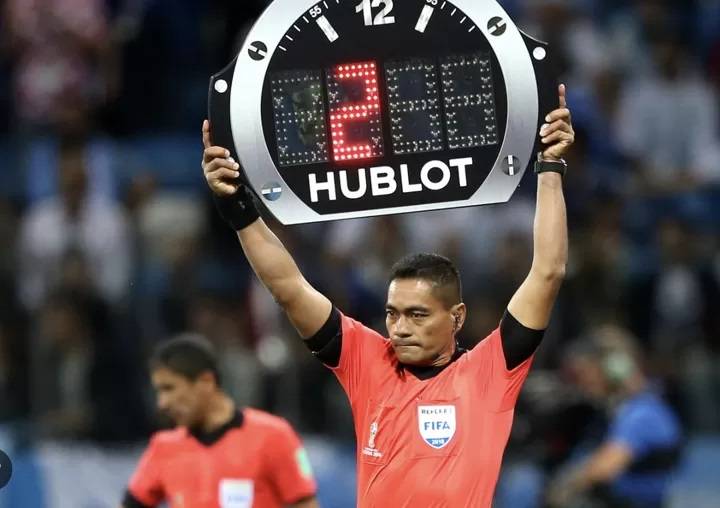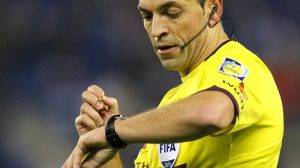Soccer, the world’s most beloved sport, is a beautiful game that unfolds on the pitch with a unique sense of time. Unlike many other sports, soccer operates on a fluid clock, often leaving fans and newcomers alike wondering about the intricacies of how time is managed during a match. In this comprehensive exploration, we delve into the nuances of soccer time, unraveling the mysteries of added time, stoppages, and the iconic referee’s watch. Join us as we navigate the twists and turns of the soccer clock, shedding light on the factors that influence match duration and the timeless moments that define the beautiful game.
Understanding the Basics: The Soccer Match Duration
Regulation Time:
A standard soccer match consists of two halves, each lasting 45 minutes. This brings the total regulation time to 90 minutes. The clock runs continuously during each half, and teams switch ends after the first 45 minutes.
Halftime Interval:
At the halfway mark, players head to the locker rooms for a halftime interval. The break typically lasts for 15 minutes, providing teams with an opportunity to regroup, strategize, and make any necessary adjustments.
Injury Time:
In addition to the 90 minutes of regulation time, the referee has the discretion to add extra time for stoppages that occurred during each half. This additional time is commonly referred to as injury time, stoppage time, or added time.
The Mystique of Added Time: Unraveling Stoppage Time in Soccer
Reasons for Stoppage:
Stoppage time is added to compensate for breaks in play that occur during a half. These interruptions can include injuries, substitutions, time-wasting, and other incidents that result in a temporary halt to the game.
Referee’s Discretion:
The decision on how much time to add is at the referee’s discretion. The referee keeps track of stoppages throughout the half and signals to the fourth official about the amount of added time. This is then displayed on the electronic board.
Significance of Added Time:
Added time adds an element of suspense and unpredictability to soccer matches. It becomes a crucial period where teams trailing on the scoreboard have an opportunity to mount a comeback, and leading teams aim to secure their advantage.
Factors Influencing Soccer Time: The Ebb and Flow of the Game
Ball in Play vs. Time Wasted:
One distinctive feature of soccer is the variation between the time the ball is in play and the time wasted during stoppages. While the clock keeps running during injuries and other stoppages, the actual time the ball is in play can be significantly less than the 90 minutes of regulation time.
Time Management Strategies:
Teams leading in the score often employ time-wasting tactics, such as slow substitutions, delaying restarts, and players intentionally taking their time to return the ball into play. These strategies add an element of gamesmanship to soccer time management.
Injury Treatment vs. Gamesmanship:
Injuries, genuine or perceived, can influence soccer time significantly. While legitimate injuries require attention and treatment, players occasionally engage in gamesmanship, using apparent injuries to run down the clock strategically.
The Referee’s Watch: A Symbol of Authority and Precision
Role of the Referee:
The referee is the ultimate arbiter of time during a soccer match. They carry the authority to stop, start, and add time as necessary. The referee’s watch, a symbol of precision, becomes a crucial tool in managing the flow of the game.
Communication with Officials:
Referees communicate with other match officials, including the fourth official, to ensure accurate timekeeping. The fourth official displays the added time on the electronic board, keeping both teams and spectators informed.
Controversies and Criticisms:
Refereeing decisions regarding added time can sometimes lead to controversies and criticisms. Teams and fans may dispute the amount of time added, particularly if it impacts the outcome of the match.
Iconic Moments in Added Time: Drama and Glory Unfold
Last-Minute Winners:
Some of the most memorable moments in soccer history have occurred during added time. Last-minute goals that secure victories or salvage draws create unparalleled drama and become etched in the collective memory of fans.
Heartbreak and Jubilation:
Added time can swing the pendulum of emotions dramatically. Heartbreak for one team can transform into jubilation for the other as the referee’s final whistle or the decisive goal in added time determines the outcome.
Historic Comebacks:
Teams facing seemingly insurmountable deficits have staged historic comebacks during added time. These moments, where resilience and determination shine, exemplify the unpredictable and thrilling nature of soccer.
Global Variations: Timekeeping Traditions in Soccer
Different Approaches:
While the standard duration of a soccer match is 90 minutes, variations exist in different competitions and regions. Some leagues may adopt slightly different rules for added time, and knockout competitions may include extra time and penalty shootouts.
Influence of Competition Formats:
The format of a competition plays a role in determining how time is managed. Cup competitions often have additional periods of extra time and penalty shootouts to ensure a winner, while league matches adhere to the standard 90-minute format.
VAR and Time Considerations:
The introduction of Video Assistant Referee (VAR) technology has added a layer of complexity to timekeeping. VAR reviews can extend the duration of stoppages, influencing the referee’s decision on added time.
Strategies for Time Management: Coaching and Player Perspectives
Coaching Strategies:
Coaches play a role in influencing time management strategies. Some coaches prioritize ball possession and quick restarts, aiming to maximize the time the ball is in play. Others may adopt a more pragmatic approach, especially when protecting a lead.
Player Awareness:
Players are often aware of the clock and added time, particularly in crucial moments of the match. Strategic awareness, coupled with effective time management on the field, can be a valuable asset for teams.
Adapting to Refereeing Styles:
Teams may need to adapt to the refereeing style of different officials. Some referees may be more lenient with time-wasting, while others may be strict in ensuring the game flows without unnecessary delays.
The Beauty of the Beautiful Game: Soccer Time as an Art
Dynamic and Unpredictable:
The dynamic nature of soccer time adds an element of unpredictability that sets the sport apart. From the rapid flow of play to the tension of added time, soccer time is an art form that captivates audiences worldwide.
Balance of Precision and Emotion:
Referees, with their watches and added time decisions, bring a balance of precision and emotion to the game. The ticking clock and the countdown to the final whistle create moments of heightened intensity and anticipation.
Timelessness of Soccer Moments:
In the grand tapestry of soccer, moments created during added time transcend the ticking clock. Last-minute goals, dramatic saves, and unexpected twists become timeless, etching themselves into the collective consciousness of soccer fans.
Related Post:
Deciphering the Defensive Dynamo: What Does a Linebacker Do in Football?
Unveiling the Dynamics: Red Card in Volleyball
Unveiling the Arsenal: Exploring the Essential Items Used During Sports
As the soccer clock continues its eternal march, the beauty of the game lies not just in the goals scored or matches won but in the timeless narratives woven through added time. Soccer time, with its fluidity and drama, symbolizes the essence of the beautiful game—an art form where every second counts, and every added moment has the potential to alter destinies.
So, whether it’s the collective gasp of fans as added time is announced or the eruption of joy when a last-minute goal finds the back of the net, soccer time remains an ever-evolving story, painting the canvas of the beautiful game with strokes of suspense, passion, and unparalleled excitement.



